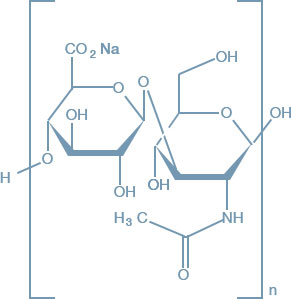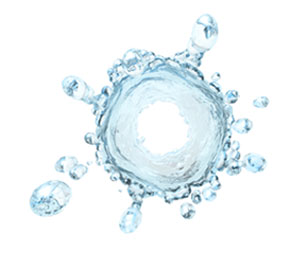- Home
- Products
- Sodium Hyaluronate
- Introduction
Introduction
- Hyaluronic Acid
-
 The sodium salt version of hyaluronic acid, a glycosaminoglycan made up of
The sodium salt version of hyaluronic acid, a glycosaminoglycan made up of
disaccharide units of D-glucuronic acid and N-acetyl-D-glucosamine. -
As a form of a complex polysaccharide made up of amino acids and uronic acid, hyaluronic acid is a polymer compound consisting of N-acetylglucosamine and glucuronic acid.
Hyaluronic acid is a natural polymer capable of absorbing 1,000 times its weight in water while simultaneously being exceptionally elastic and viscous and, in humans, is found in high concentrations in the skin and the joints.
Due to these unique properties, hyaluronic acid plays an important role in maintaining the right amount of water needed for numerous bodily functions.
-
Today, hyaluronic-acid compounds are being widely used as degenerative-arthritis treatments, dermal fillers, anti-adhesion agents, and eye drops and even as food and cosmetics ingredients. With the market for the compounds continuing to grow, hyaluronic acid is widely recognized as a substance with immense potential.
While the first commercial method of hyaluronic-acid production was through extraction from the comb of roosters, today production via fermentation of microbes is becoming increasingly popular.

-
Ildong Hyaltech utilizes ID9103, a bacterial strain developed at Ildong Central Research Lab, to manufacture hyaluronic acid via fermentation.
This microbe-based manufacturing method produces hyaluronic acid that is purer and safer than hyaluronic acid manufactured via conventional methods such as extraction from rooster combs and combination crosslinking. What’s more, the method is more viable commercially since it enables unrestricted adjustment of the acid’s molecular weight all the way from 1,000,000 Da to 6,000,000 Da to suit various applications and needs.
Ildong Hyaltech currently holds patents related to techniques for regulating the molecular weight of hyaluronic acid in Europe, China, and Japan and patents concerning methods of manufacturing hyaluronic acid using microbes in the US and Japan.
Hyaluronic Acid’s Functions

- Space-filling
- Structure-stabilizing
- Cell-protective
- A basic substance found in all types of tissue, A cartilage lubricant, Part of the dermal-tissue composition, Maintains hydration and moisturization levels, Plays a role in immunity and tissue formation

